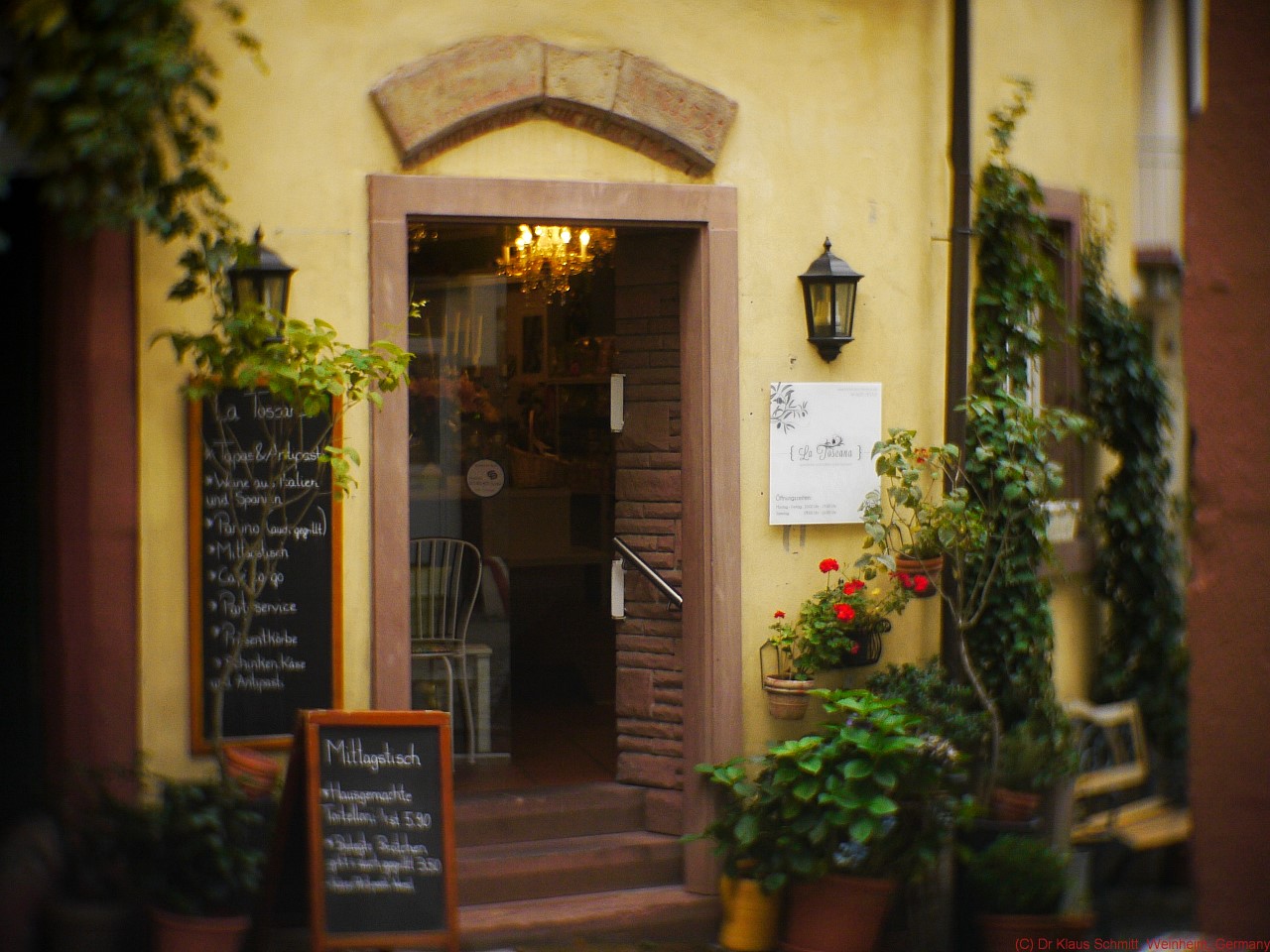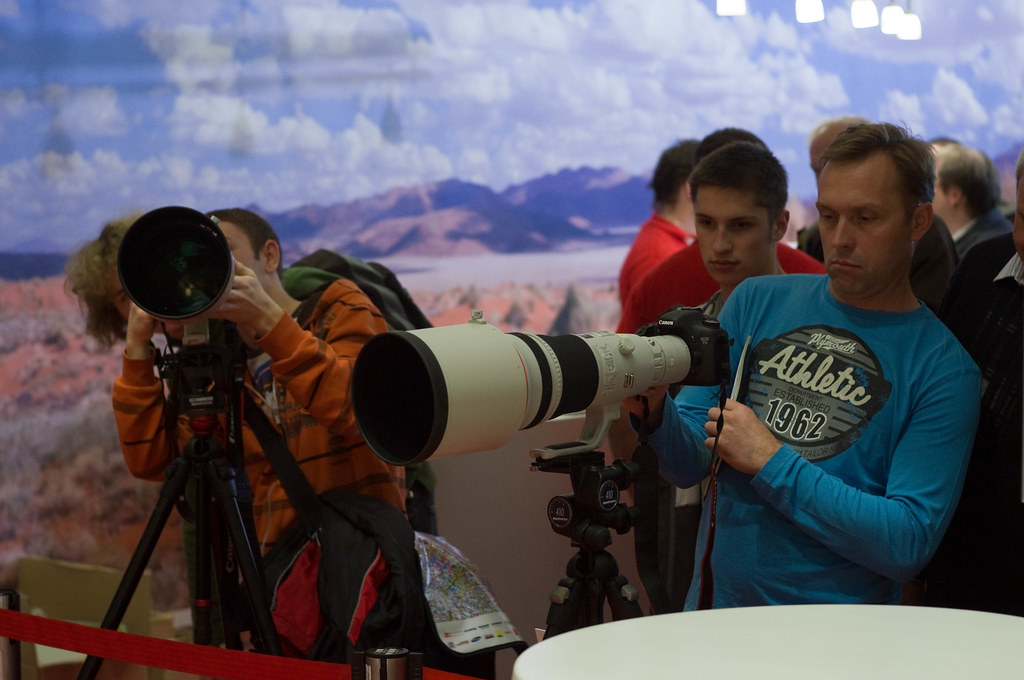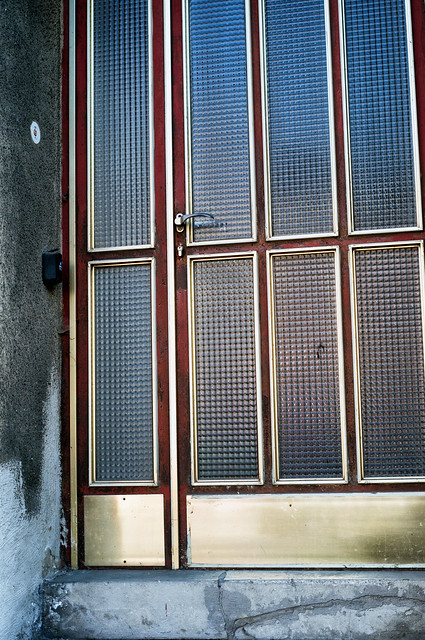| View previous topic :: View next topic |
| Author |
Message |
wolan


Joined: 30 Jun 2015
Posts: 576
Location: Zurich
|
 Posted: Sun Oct 11, 2015 8:16 am Post subject: Unique color rendition Posted: Sun Oct 11, 2015 8:16 am Post subject: Unique color rendition |
 |
|
wolan wrote:
Hi,
can you name me a few old MF lenses, which in your opinion have some unique / interesting / unusual color rendition?
If you can post or point me out to some samples that would be great.
Cheers. |
|
| Back to top |
|
 |
BurstMox


Joined: 04 Dec 2011
Posts: 1998
Location: France
Expire: 2016-08-02
|
 Posted: Sun Oct 11, 2015 8:27 am Post subject: Posted: Sun Oct 11, 2015 8:27 am Post subject: |
 |
|
BurstMox wrote:
Uran-27 100mm/2.5 has specific color rendition. Very warm rendering, but deep blue flares...



_________________
Pierre
sovietlenses.fr
Soviet lenses Facebook group |
|
| Back to top |
|
 |
kds315*


Joined: 12 Mar 2008
Posts: 16544
Location: Weinheim, Germany
Expire: 2021-03-09
|
 Posted: Sun Oct 11, 2015 9:05 am Post subject: Posted: Sun Oct 11, 2015 9:05 am Post subject: |
 |
|
kds315* wrote:
Basically, older lenses which used thoriorated (= radioactive) glass how intense browning,
which gives a unique warm "retro" effect (based on strongly reduced blue part of the spectrum)
Such as some Takumars, Yashinons, Kodoka Ektars, TTH Ental lenses etc.
See http://camerapedia.wikia.com/wiki/Radioactive_lenses
A sesond source would be to use lenses designed for near infrared (not the ones for longer
IR >1000nm / 1 micron as they do not transmit visible light at all), as they also have missing
blue transmission and often very unique color rendition.
The Uran-27 mentioned above is one of these latter ones, as it was once designed for aerial
reconnaissance, using deep yellow filters to suppress the effect of aerial fog.
Further older cine lenses often have such unique rendering, too, but have gotten rather sought
after by indie movie makers and hence have gotten expensive and somewhat hard to find.
Cine lenses made by Dallmeyer, Watson, Meyer Plasmat etc. ....
A few examples (all from same location):
Dallmeyer 1.9/2" (50mm): https://www.flickr.com/photos/kds315/albums/72157647221808809

Cyclops 1.5/85mm night vision lens: https://www.flickr.com/photos/kds315/albums/72157640103076383

Steinheil Culminon 1.5/75mm: https://www.flickr.com/photos/kds315/albums/72157632190676049

_________________
Klaus - Admin
"S'il vient a point, me souviendra" [Thomas Bohier (1460-1523)]
http://www.macrolenses.de for macro and special lens info
http://www.pbase.com/kds315/uv_photos for UV Images and lens/filter info
https://www.flickr.com/photos/kds315/albums my albums using various lenses
http://photographyoftheinvisibleworld.blogspot.com/ my UV BLOG
http://www.travelmeetsfood.com/blog Food + Travel BLOG
https://galeriafotografia.com Architecture + Drone photography
Currently most FAV lens(es):
X80QF f3.2/80mm
Hypergon f11/26mm
ELCAN UV f5.6/52mm
Zeiss UV-Planar f4/60mm
Zeiss UV-Planar f2/62mm
Lomo Уфар-12 f2.5/41mm
Lomo Зуфар-2 f4.0/350mm
Lomo ZIKAR-1A f1.2/100mm
Nikon UV Nikkor f4.5/105mm
Zeiss UV-Sonnar f4.3/105mm
CERCO UV-VIS-NIR f1.8/45mm
CERCO UV-VIS-NIR f4.1/94mm
CERCO UV-VIS-NIR f2.8/100mm
Steinheil Quarzobjektiv f1.8/50mm
Pentax Quartz Takumar f3.5/85mm
Carl Zeiss Jena UV-Objektiv f4/60mm
NYE OPTICAL Lyman-Alpha II f1.1/90mm
NYE OPTICAL Lyman-Alpha I f2.8/200mm
COASTAL OPTICS f4/60mm UV-VIS-IR Apo
COASTAL OPTICS f4.5/105mm UV-Micro-Apo
Pentax Ultra-Achromatic Takumar f4.5/85mm
Pentax Ultra-Achromatic Takumar f5.6/300mm
Rodenstock UV-Rodagon f5.6/60mm + 105mm + 150mm
|
|
| Back to top |
|
 |
kuuan


Joined: 14 Jan 2008
Posts: 4573
Location: right now: Austria
Expire: 2014-12-26
|
 Posted: Sun Oct 11, 2015 10:55 am Post subject: Posted: Sun Oct 11, 2015 10:55 am Post subject: |
 |
|
kuuan wrote:
I regard color rendition of pretty much any of my lenses that had been made before about 1965 as interesting to unique.
special mention 55mm Auto Takumars, e.g. the f2/55m:
 Untitled by Andreas, on Flickr Untitled by Andreas, on Flickr
 merit ! - ? by Andreas, on Flickr merit ! - ? by Andreas, on Flickr
 Untitled by Andreas, on Flickr Untitled by Andreas, on Flickr
_________________
my photos on flickr: https://www.flickr.com/photos/kuuan/collections |
|
| Back to top |
|
 |
tb_a


Joined: 26 Jan 2010
Posts: 3678
Location: Austria
Expire: 2019-08-28
|
 Posted: Sun Oct 11, 2015 11:11 am Post subject: Posted: Sun Oct 11, 2015 11:11 am Post subject: |
 |
|
tb_a wrote:
| kuuan wrote: |
I regard color rendition of pretty much any of my lenses that had been made before about 1965 as interesting to unique.
special mention 55mm Auto Takumars, e.g. the f2/55m:
|
Although I am not really a fan of mystical renderings I can certainly confirm that the old Takumars have something special, not only the radioactive ones. At least from my lens comparisons I know that those lenses deliver somehow much warmer colors than comparable lenses of my collection. 
As Klaus already mentioned, some old radioactive glasses, especially when not exposed to UV radiation for a longer period of time, can also deliver some unique colors.
_________________
Thomas Bernardy
Manual focus lenses mainly from Minolta, Pentax, Voigtlaender, Leitz, Topcon and from Russia (too many to be listed here). |
|
| Back to top |
|
 |
uhoh7

Joined: 24 Nov 2010
Posts: 1300
Location: Idaho, USA
|
 Posted: Sun Oct 11, 2015 3:37 pm Post subject: Posted: Sun Oct 11, 2015 3:37 pm Post subject: |
 |
|
uhoh7 wrote:
In my own collection the newer Leica lenses really stand apart in terms of rich colors, like the SEM 21, 28 Cron and 90/2.5. My older v4 cron, a legendary lens is not in the same league color wise, nor are my zeiss lenses, though they are the closest.
Of course you have to pay alot for this 
Puts is interesting on the issue:
"The spectral characteristics of a lens can be evaluated in terms of its total ef- fect on the several layers of an average color film. The effect on the blue sensi- tive layers is called the blue photo- graphic response of the lens. These responses can be calculated.
The CCI value is computed by multiplying the relative transmittance values of a lens by the weighted spectral sensi- tivity values for the blue, green and red sensitive layers. The total response is obtained by summation. and will give a number for blue, one for green, one for red. To simplify, make the smallest ele- ment of the three number designations equal to zero. If a lens has a Color Con- tribution Index of 0/5/4, this means that the average color film in standard illumination sees the lens as providing more green (5) and more red layer (4) re- sponse relative to the blue (0) than that obtained with no lens in the system. This lens would give a yellow cast.
The ISO however has established that with the sensitivity data of emulsion manufacturers, the standard lens should conform to the 0/5/4 index.
The tolerances are established as follows.
Blue is 0 with +3 and -4. Green is 5 with +0 and -2 Red is 4 with +1 and -2. " From Souls and Secrets
but the wildest lens I own in terms of color is the Sonnetar, which has some special glass:
Right out of the M9 you get a look like this:

L1031622 by WS Snails, on Flickr
which of course varies alot with light:

L1032716 by unoh7, on Flickr
The variance of light itself, white balance in the camera, and camera profile in LR or other editor all contribute variables.
The palette of CV lenses is all over the place, while at least for M mount the Leica and Zeiss are more consistent with later lenses.
So when we see samples it can be hard to tell what is the lens and what is something else 
_________________
Making MFlenses safe for the letter *L*  |
|
| Back to top |
|
 |
tb_a


Joined: 26 Jan 2010
Posts: 3678
Location: Austria
Expire: 2019-08-28
|
 Posted: Sun Oct 11, 2015 3:51 pm Post subject: Posted: Sun Oct 11, 2015 3:51 pm Post subject: |
 |
|
tb_a wrote:
| uhoh7 wrote: |
The variance of light itself, white balance in the camera, and camera profile in LR or other editor all contribute variables.
So when we see samples it can be hard to tell what is the lens and what is something else  |
I think the importance of different color renderings of lenses has strongly decreased on digital therefore. It was much more important in film times and mostly with color slides for projection where you can't do anything to manipulate the colors afterwards. At least that's my personal persuasion.
_________________
Thomas Bernardy
Manual focus lenses mainly from Minolta, Pentax, Voigtlaender, Leitz, Topcon and from Russia (too many to be listed here). |
|
| Back to top |
|
 |
wolan


Joined: 30 Jun 2015
Posts: 576
Location: Zurich
|
 Posted: Sun Oct 11, 2015 7:16 pm Post subject: Posted: Sun Oct 11, 2015 7:16 pm Post subject: |
 |
|
wolan wrote:
Hi,
thanks. Nice pictures.
This is the lens right? http://allphotolenses.com/lenses/item/c_1479.html
It says it has a mount for large format cameras, so how to use it on a DSLR?
Cheers.
| BurstMox wrote: |
Uran-27 100mm/2.5 has specific color rendition. Very warm rendering, but deep blue flares...


 |
|
|
| Back to top |
|
 |
kuuan


Joined: 14 Jan 2008
Posts: 4573
Location: right now: Austria
Expire: 2014-12-26
|
 Posted: Sun Oct 11, 2015 7:42 pm Post subject: Posted: Sun Oct 11, 2015 7:42 pm Post subject: |
 |
|
kuuan wrote:
| tb_a wrote: |
Although I am not really a fan of mystical renderings I can certainly confirm that the old Takumars have something special, not only the radioactive ones. |
talk mythical, even mystical, say 8 element Super Takumar 1.4/50 
 Untitled by Andreas, on Flickr Untitled by Andreas, on Flickr
_________________
my photos on flickr: https://www.flickr.com/photos/kuuan/collections |
|
| Back to top |
|
 |
iangreenhalgh1


Joined: 18 Mar 2011
Posts: 15685
Expire: 2014-01-07
|
 Posted: Sun Oct 11, 2015 7:58 pm Post subject: Posted: Sun Oct 11, 2015 7:58 pm Post subject: |
 |
|
iangreenhalgh1 wrote:
This is the digital age, colour rendition is infinitely tweakable in software so lens selection for colour rendtion is rather redundant.
_________________
I don't care who designed it, who made it or what country it comes from - I just enjoy using it! |
|
| Back to top |
|
 |
kryss


Joined: 13 Sep 2009
Posts: 2169
Location: Canada
Expire: 2017-09-18
|
 Posted: Mon Oct 12, 2015 4:30 pm Post subject: Posted: Mon Oct 12, 2015 4:30 pm Post subject: |
 |
|
kryss wrote:
Second that Ian...
_________________
Do not trust Atoms....they make up everything. |
|
| Back to top |
|
 |
jamaeolus


Joined: 19 Mar 2014
Posts: 2931
Location: Eugene
Expire: 2015-08-20
|
 Posted: Mon Oct 12, 2015 5:24 pm Post subject: Posted: Mon Oct 12, 2015 5:24 pm Post subject: |
 |
|
jamaeolus wrote:
| iangreenhalgh1 wrote: |
| This is the digital age, colour rendition is infinitely tweakable in software so lens selection for colour rendtion is rather redundant. |
EVERYTHING is tweakable in software, so why bother with a lens at all? /s
Sometimes its easier to get the effect you want directly from the camera. The other thing is, sometimes you get interesting effects unintentionally.
_________________
photos are moments frozen in time |
|
| Back to top |
|
 |
kryss


Joined: 13 Sep 2009
Posts: 2169
Location: Canada
Expire: 2017-09-18
|
 Posted: Mon Oct 12, 2015 5:29 pm Post subject: Posted: Mon Oct 12, 2015 5:29 pm Post subject: |
 |
|
kryss wrote:
?????..
_________________
Do not trust Atoms....they make up everything. |
|
| Back to top |
|
 |
BurstMox


Joined: 04 Dec 2011
Posts: 1998
Location: France
Expire: 2016-08-02
|
 Posted: Mon Oct 12, 2015 5:44 pm Post subject: Posted: Mon Oct 12, 2015 5:44 pm Post subject: |
 |
|
BurstMox wrote:
| wolan wrote: |
Hi,
thanks. Nice pictures.
This is the lens right? http://allphotolenses.com/lenses/item/c_1479.html
It says it has a mount for large format cameras, so how to use it on a DSLR?
Cheers.
| BurstMox wrote: |
Uran-27 100mm/2.5 has specific color rendition. Very warm rendering, but deep blue flares...


 |
|
You can adapt it. I did it for Mirrorless, it's a way harder to get infinity on DSLR (but possible, you just have very few space for adaptation behind the lens).
You asked for lenses with different color rendition, not for lenses that were easily adaptable  . .
| iangreenhalgh1 wrote: |
| This is the digital age, colour rendition is infinitely tweakable in software so lens selection for colour rendtion is rather redundant. |
If you are a professional, that's certainly right, the best way is to tweak everything with photoshop (and use an expensive good lens). But as amateur or collectioner, I think it can be interesting to have different lenses with different caracter... It's more interesting than spending the night on photoshop.
_________________
Pierre
sovietlenses.fr
Soviet lenses Facebook group |
|
| Back to top |
|
 |
iangreenhalgh1


Joined: 18 Mar 2011
Posts: 15685
Expire: 2014-01-07
|
 Posted: Mon Oct 12, 2015 7:34 pm Post subject: Posted: Mon Oct 12, 2015 7:34 pm Post subject: |
 |
|
iangreenhalgh1 wrote:
I agree about the interesting nature of lenses with character, for sure. I mostly use lenses with character for both their interesting nature and the fact the images are a bit different.
Colour rendition however is something that is so easy to tweak that I've never really thought about it being part of the character of a lens.
_________________
I don't care who designed it, who made it or what country it comes from - I just enjoy using it! |
|
| Back to top |
|
 |
Nordentro


Joined: 24 Jun 2010
Posts: 4713
Location: Lillehammer, Norway
Expire: 2015-01-29
|
 Posted: Mon Oct 12, 2015 7:52 pm Post subject: Posted: Mon Oct 12, 2015 7:52 pm Post subject: |
 |
|
Nordentro wrote:
The Canon 35mm 1.8 in LTM have different color output than most lenses I have tested.
_________________
Lars | Manuellfokus.no |
|
| Back to top |
|
 |
uhoh7

Joined: 24 Nov 2010
Posts: 1300
Location: Idaho, USA
|
 Posted: Mon Oct 12, 2015 11:57 pm Post subject: Posted: Mon Oct 12, 2015 11:57 pm Post subject: |
 |
|
uhoh7 wrote:
| iangreenhalgh1 wrote: |
Colour rendition however is something that is so easy to tweak that I've never really thought about it being part of the character of a lens. |
While I think it's always hard to tell what's the lens and whats the camera and whats the PP, like sharpness, you cannot tweak easily what is not there to begin with.
Try as I might, I cannot make my duller lenses sing like the ones which breath color. Always some small or large aspect is missing, and the time I spent trying is missing forever. To make even one of my late Leica lenses look like the sonnetar? Not in my skill set, and I'm editing all the time.
Like trying to forge a signature without the same alphabet. Colors react with glass differently. Lens designs introduce complex color variables which change with aperture and light. You can't just cook that up post, sorry, though you can of course make huge changes in saturation, tone and heat. These are very blunt adjustments, and while they may make an editor feel powerful, they are crude, or so it seems to me.
Or maybe I'm missing the software which will make all my glass "APO"? 
_________________
Making MFlenses safe for the letter *L*  |
|
| Back to top |
|
 |
kuuan


Joined: 14 Jan 2008
Posts: 4573
Location: right now: Austria
Expire: 2014-12-26
|
 Posted: Tue Oct 13, 2015 5:49 am Post subject: Posted: Tue Oct 13, 2015 5:49 am Post subject: |
 |
|
kuuan wrote:
agree with both Lars / Nordentro and Uhoh7, though I don't have his or any Leicas and more refer to characteristics of old lenses.
Canon LTM 1.8/35 does the pastel colors of Vietnam very well, reds and blues also can be strong and coldish. For me color rendition is a very important characteristic of a lens, and another lens that comes to mind is Komura LTM 3.5/105
Canon LTM 1.8/35 on Sony A7
 Untitled by Andreas, on Flickr Untitled by Andreas, on Flickr
Canon LTM 1.8/35 on Sony NEX5n
 Canon LTM 1.8/35 wide open by Andreas, on Flickr Canon LTM 1.8/35 wide open by Andreas, on Flickr
Canon LTM 1.8/35 on Ricoh GXR M
 Untitled by Andreas, on Flickr Untitled by Andreas, on Flickr
Komura LTM 3/5/105 on RIcoh GXR M
 Untitled by Andreas, on Flickr Untitled by Andreas, on Flickr
_________________
my photos on flickr: https://www.flickr.com/photos/kuuan/collections |
|
| Back to top |
|
 |
Pancolart


Joined: 04 Feb 2008
Posts: 3693
Location: Slovenia, EU
Expire: 2013-11-18
|
 Posted: Tue Oct 13, 2015 4:09 pm Post subject: Posted: Tue Oct 13, 2015 4:09 pm Post subject: |
 |
|
Pancolart wrote:
| uhoh7 wrote: |
| Try as I might, I cannot make my duller lenses sing like the ones which breath color. Always some small or large aspect is missing, and the time I spent trying is missing forever... |
Well spoken! I couldn't agree more.
As for suggestion: CANON FD S.C. 2.5/135mm
_________________
---------------------------------
The Peculiar Apparatus Of Victorian Steampunk Photography: 100+ Genuine Steampunk Camera Designs https://www.amazon.com/dp/B0B92829NS |
|
| Back to top |
|
 |
buerokratiehasser

Joined: 12 Jun 2011
Posts: 470
|
 Posted: Thu Oct 15, 2015 1:14 pm Post subject: Posted: Thu Oct 15, 2015 1:14 pm Post subject: |
 |
|
buerokratiehasser wrote:
You can't tweak what isn't there. Spectrum is continuous, light sources maybe not so, wavelengths eaten can't be gotten back by pulling the Red slider up and amplifying the other Red wavelengths.
You can't tweak cross effects (from film) like Velvia Reds.
You can't tweak/duplicate wide angle lens shot from 4 cm away (you can just move farther away or stitch for a boring landscape shot)
That said, a lens is rather unlikely to eat all the light in a wavelength or to cross (would require sharp filters more expensive than the lens itself, or nonlinear optics).
Still, people do speak of "Minolta colors". The reds look very nice indeed but I haven't got around what these colors are exactly. Maybe excellent transmission even in deep Reds, overall neutral cast. |
|
| Back to top |
|
 |
buerokratiehasser

Joined: 12 Jun 2011
Posts: 470
|
 Posted: Thu Oct 15, 2015 1:17 pm Post subject: Posted: Thu Oct 15, 2015 1:17 pm Post subject: |
 |
|
buerokratiehasser wrote:
Oh if you want a lens that taints, I mean, tints your photos, try cheap wider screw-on lenses. They are so bad that they usually come with surreal blue-green tint. Add to this effective 11 mm or so and you're in Strange Territory. Worse than Holga. |
|
| Back to top |
|
 |
tb_a


Joined: 26 Jan 2010
Posts: 3678
Location: Austria
Expire: 2019-08-28
|
 Posted: Thu Oct 15, 2015 1:32 pm Post subject: Posted: Thu Oct 15, 2015 1:32 pm Post subject: |
 |
|
tb_a wrote:
| uhoh7 wrote: |
Or maybe I'm missing the software which will make all my glass "APO"? |
Most probably. 
_________________
Thomas Bernardy
Manual focus lenses mainly from Minolta, Pentax, Voigtlaender, Leitz, Topcon and from Russia (too many to be listed here). |
|
| Back to top |
|
 |
iangreenhalgh1


Joined: 18 Mar 2011
Posts: 15685
Expire: 2014-01-07
|
 Posted: Thu Oct 15, 2015 1:59 pm Post subject: Posted: Thu Oct 15, 2015 1:59 pm Post subject: |
 |
|
iangreenhalgh1 wrote:
If by APO you mean free of CA, yes, software can do that.
I sense a lot of hot air being spouted to justify overpriced Leica lenses yet again.
It's like when Leicists talk about 'Leica glow' as if it's some magical property only their expensive Leica lenses possess. How laughable, it's nothing more than residual spherical aberration.
_________________
I don't care who designed it, who made it or what country it comes from - I just enjoy using it! |
|
| Back to top |
|
 |
Rick1779


Joined: 17 May 2013
Posts: 1207
Location: Italy
Expire: 2014-06-06
|
 Posted: Thu Oct 15, 2015 4:39 pm Post subject: Posted: Thu Oct 15, 2015 4:39 pm Post subject: |
 |
|
Rick1779 wrote:
| iangreenhalgh1 wrote: |
| This is the digital age, colour rendition is infinitely tweakable in software so lens selection for colour rendtion is rather redundant. |
+1000
 
_________________
TELLTALE
 |
|
| Back to top |
|
 |
Rick1779


Joined: 17 May 2013
Posts: 1207
Location: Italy
Expire: 2014-06-06
|
 Posted: Thu Oct 15, 2015 4:40 pm Post subject: Posted: Thu Oct 15, 2015 4:40 pm Post subject: |
 |
|
Rick1779 wrote:
| iangreenhalgh1 wrote: |
If by APO you mean free of CA, yes, software can do that.
I sense a lot of hot air being spouted to justify overpriced Leica lenses yet again.
It's like when Leicists talk about 'Leica glow' as if it's some magical property only their expensive Leica lenses possess. How laughable, it's nothing more than residual spherical aberration. |
or Pentax colors in pentax forums, or Minolta colors in Minolta forums etc... 
_________________
TELLTALE
 |
|
| Back to top |
|
 |
|
|
